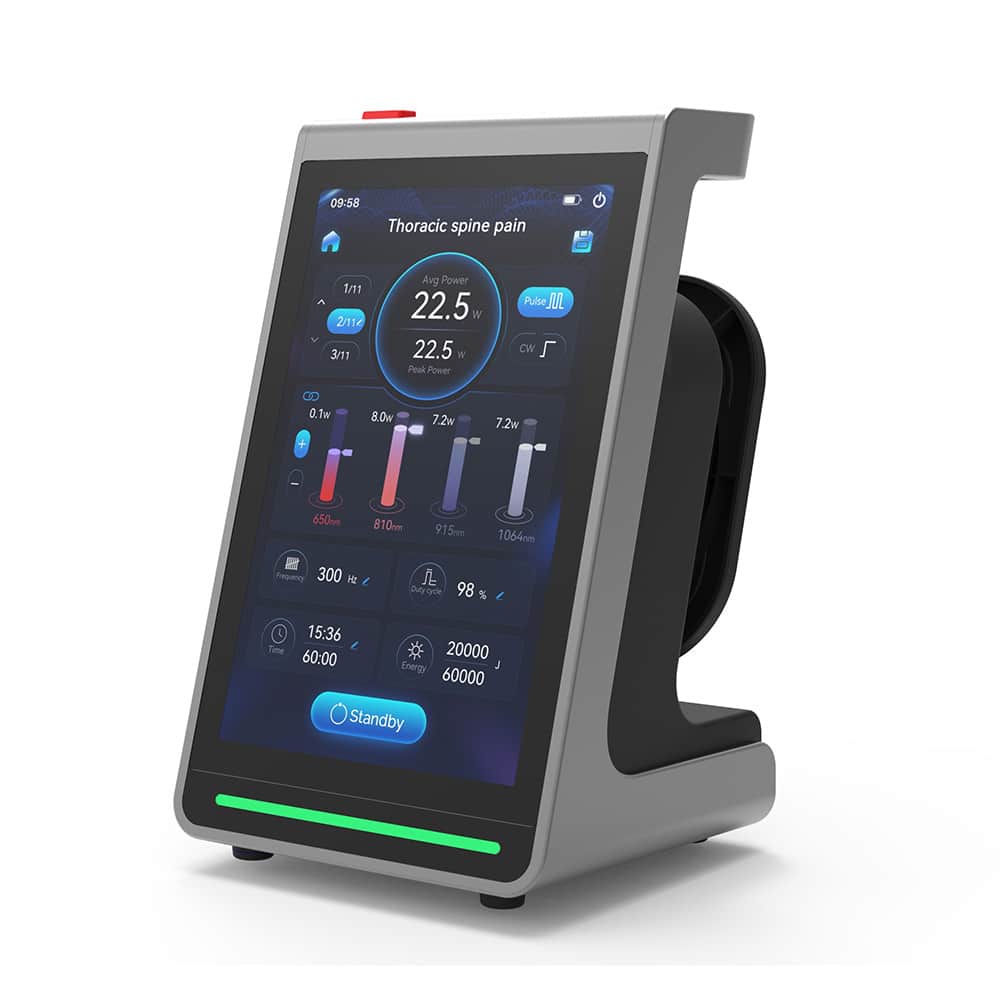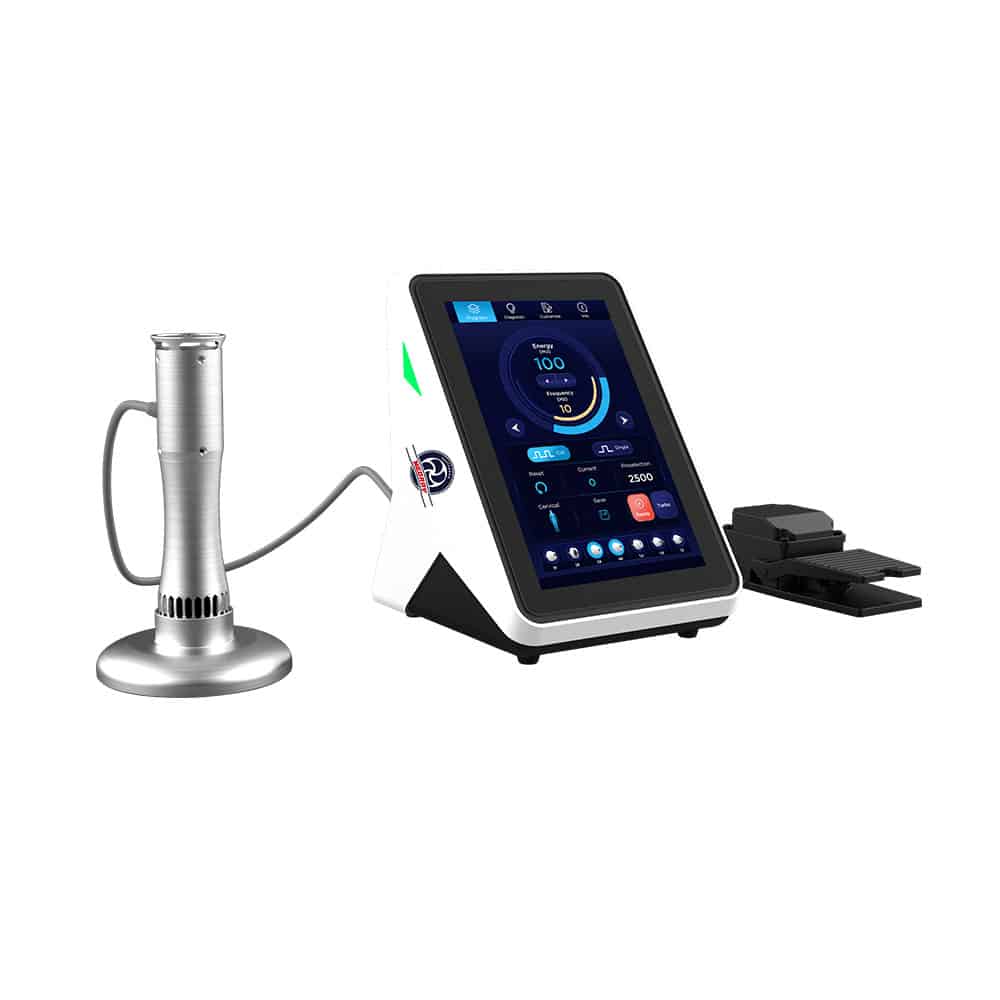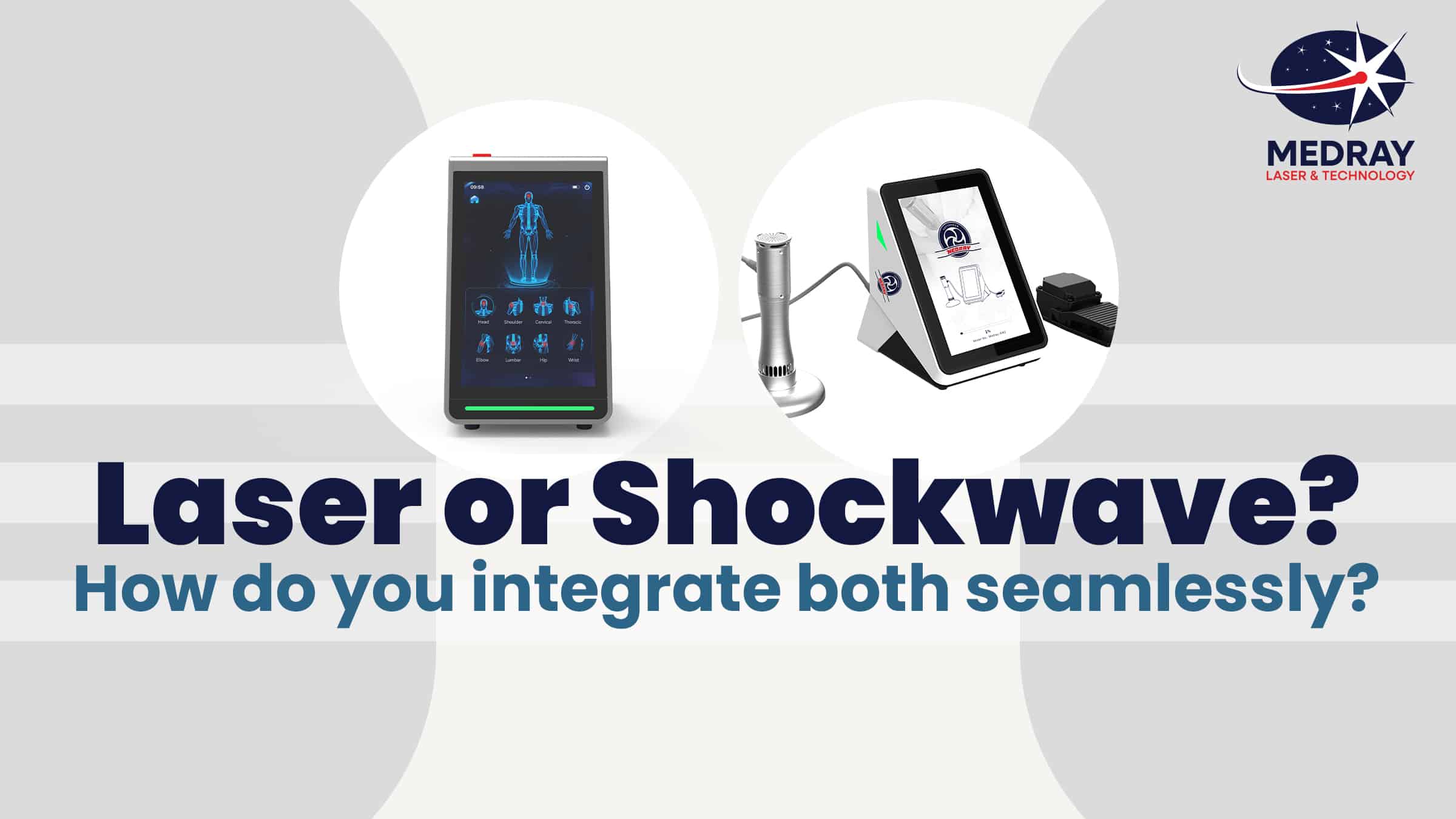Modality choice should serve the plan, not drive it.
Laser

Explore Medray’s Class 4 Lasers
Shockwave

Explore Softshock 2.0 (RPW)
What’s the First Step in Deciding: Laser or Shockwave?
- Focal presentations: When a patient identifies a very specific site of chronic irritation, such as a localized tender spot or thickening that flares with load (stress to the area from movement), a targeted mechanical stimulus often makes sense.
- In these cases, a short, focal shockwave application followed by an immediate re-test (e.g., grip strength, decline squat, first-step pain, whatever reflects their primary complaint) can deliver actionable feedback.
- Irritable or broad presentations: When the region is broadly sensitive, tolerance is low, or the case resembles post-acute soreness or an acute flare of a chronic condition that needs a gentler entry, laser therapy may be the better first choice.
- Laser is contact-free, quick to set up when standardized presets are used, and integrates seamlessly with graded loading in the same visit.
How Do You Adjust After the First Few Sessions?
After 2-3 visits, reassess the presentation:
- If irritability has decreased, you may switch the sequence (laser first, shockwave second).
- You may also simplify to a single modality if that best supports the day’s loading strategy.
What About Mixed or Complex Cases?
Mixed presentations are common in clinical practice, and that’s where a brief sequence—focal first, then regional—can help.
- Apply a short dose of shockwave to the specific limiting area.
- Follow with a brief laser application to the surrounding tissues.
The operative word is short—these are compact interventions that fit neatly inside a standard follow-up visit, not standalone appointments
Why Is Functional Re-Testing So Critical?
- One pre-selected functional re-test
- Documentation of time-in and time-out for the modality block
- A single-sentence rationale for modality choice
Solutions for confident clinical decision-making
Want a one-page triage sheet tailored to your patient mix?
Medray Laser & Technology manufactures and distributes FDA-cleared medical devices designed to support circulation, tissue stimulation, and pain relief. Our products are intended for use by licensed healthcare professionals. While clinical research and practitioner experience support the use of laser and radial pressure wave (RPW) therapy in various applications, some uses described in this article may be considered off-label and are not explicitly cleared by the FDA. Patients should consult their healthcare provider to determine the best treatment for their individual needs. The information provided in this article is for educational purposes only and should not be considered medical advice or a substitute for consultation with a licensed medical professional.
Educational content is for licensed healthcare providers and may include discussion of clinical uses not cleared by the FDA. Provided for scientific exchange and not intended as promotional.
Use laser and radial pressure wave/shockwave within cleared indications and scope.
